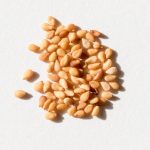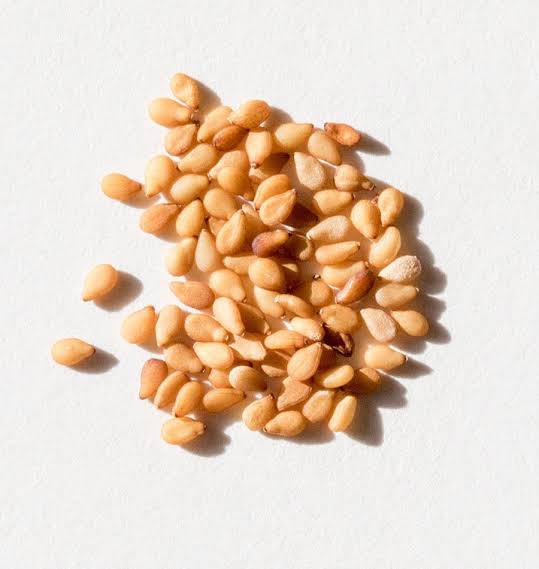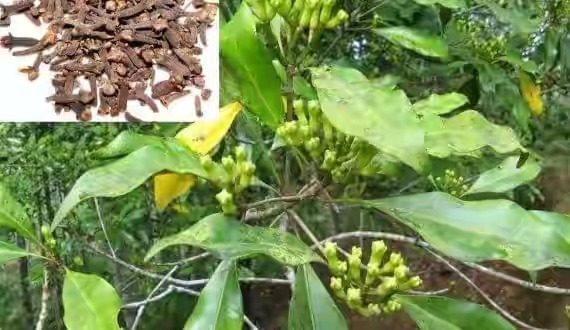Sesamum indicum L or Sesame seeds or Benniseeds or Ridi (Hausa) or Isasa (Igbo) or Ekuku (Yoruba): An ancient plant with high nutritional value and medicinal properties
Dating back to as early as 1600 BC, sesame seeds are the oldest condiment known to man. Sesame, Sesamum indicum L. belonging to the family Pedaliaceae, is widely cultivated in the tropical parts of Africa and Asia and about 36 species are said to be existent. Their wild species are located mainly in Africa and only a few in India. The original home of this crop is known to be Ethiopia. The major sesame producers are India, Myanmar, China and Sudan with 68% of the total world production. In the world, India ranks first in the production and area of sesame seeds and is grown in different seasons covering practically all agro-ecological zones. Sesame seeds are tiny, flat, oval with a nutty taste and delicate with almost invisible crunch. They vary in size from small to large and come in a host of different colours, depending upon the variety, including white, yellow, black, grey, brown and red. All these varieties can be found in Nigeria. The seeds from North-east region of India are black; those from eastern region are brown to black and from south are predominantly red or reddish brown. Seeds from other regions are white. White and black seeded strains, on an average contain 55% and 47.8% oil respectively. White and black sesame seed coat fractions have considerable anti-oxidant property but the same is better in black sesame coats. The oil extracted from coated seeds possesses high oxidative stability than that of de-hulled seeds. De-hulling is necessary as the hull contains 2-3% oxalic acid, which binds to calcium and has a bitter flavour. Roasted sesame seed is a popular food in Taiwan and other Asian countries due to its unique flavour and folkloric beliefs in its anti-ageing effects. Results from animal studies have provided some scientific evidence for this. Sesame is usually consumed as a semi-liquid paste, confectionery, or stuffing in desserts. Oil (50%) expelled from roasted sesame seeds is commonly used as cooking oil and is a traditional medicinal food for Taiwanese women after delivery. Sesame oil is regarded as queen of oils as it is an ingredient of many varieties of foods. It is used as a substitute for olive oil, as a salad oil and for cooking fish and vegetables in many parts of the world. Aqua hulled, double washed and dried sesame seeds are used on hamburger buns. Roasted natural sesame seeds are used in the preparation of bread, breadsticks, cookies, chocolates and ice creams. Mechanically hulled sesame seeds are the basis for candies and creamy, sweet wholesome tahini. The antioxidant property of refined sesame oil contributing for its greater shelf life makes it suitable for food industry. Sesame seed sprouts, sesame broccoli rice, ginger sesame chicken, sesame granula, hummus, sesame spread, tangerine and sesame, sesame seed sauce and sesame pastries are a few recipes of sesame. The de-oiled meal obtained from extraction of sesame oil is mainly utilized as cattle and poultry feed. It is worth mentioning that sesame oil, which is rich in polyunsaturated fatty acids, sesamin and vitamin E significantly decreases blood pressure, even when compared with blood pressure lowering drugs. Therefore, consumption of sesame oil can help in the prevention and treatment of hypertension.
The high content of dietary fibre, oleic acid and linoleic acid in sesame seeds underlie its capacity to lower plasma cholesterol. Moreover, sesamin has been shown to inhibit (stop) intestinal absorption of cholesterol and decrease the activity 3-hydroxy-3-methylglutaryl CoA reductase (the main enzyme responsible for the production of cholesterol in mammals). Sesamin, at a rather low dose (65 mg/d, or approximately equivalent to consuming 13 g of sesame seed), lowers plasma cholesterol in people with hypercholesterolemia (elevated blood cholesterol) but sesame oil containing 100 mg sesamin does not affect blood lipids in normocholesterolemic young women (women with normal level of blood cholesterol). Sesame seed contain important antioxidants, such as sesaminol, sesamolinol, sesamolin and sesamin that help in stabilizing sesame seed oil as well as help in protecting low density lipoprotein (bad cholesterol) from being damaged by free radicals. Bad cholesterol damaged by free radicals contributes to the formation of arteriosclerosis, which is a process that causes blocking of blood vessels.
Furthermore, antioxidant lignans present in sesame seeds have been shown to possess hypocholesterolemic (lower blood cholesterol) and immunomodulatory effect. Vitamin E, a fat soluble antioxidant, protects the body from the harmful effects of free radicals. High contents of lignans and gamma-tocopherol (another form of vitamin E) make sesame oil an extremely stable, naturally occurring, edible oil. Sesamin and some catechol compounds in sesame seeds have strong radical eliminating activity.
Sesamin also increases the retention of gamma-tocopherol, which usually has very low bioavailability. The synergistic interaction of lignans and vitamin E reduces oxidative stress. Up to 1.5% of the weight of sesame seed or oil is made up of lignans, the majority of which are sesamin and sesamolin. The level of lignans in sesame is even higher than in flaxseed, which was previously considered the richest source of lignans. Flaxseed lignans, isoflavones, and coumestans, have generally been categorized as the 3 major groups of phytoestrogens (plant oestrogens = hormones). Enterolactone (ENL) and enterodiol, converted from flaxseed lignans by intestinal microflora, are considered the agents responsible for oestrogenic or hormonal activity. Women, after menopause (loss of the ability to produce sex hormones), face undesirable conditions associated with decline of oestrogens. One is a greater risk of silent myocardial infarction (heart attack) than in men. The prevalence of hypercholesterolemia (>6.21 mmol/L) is higher in women than men in the 45–64 y age group among Asians. Furthermore, damage to bad cholesterol by free radicals is associated with the risk of atherosclerosis and increases with aging.

Credit: Westcoastseeds
The lignans and other bioactive compounds found in sesame seeds help in improving the health and quality of life of women after menopause. Sesame oil is known since Vedic times and is the most esteemed oil in Ayurveda. Sesame oil is known for its healing properties and has a reputation as a sedative in Tibetan medicine and also used for millennia in Chinese system of medicine.
In Ayurveda, sesame is known to cure Tridoshas (The sum of the three doshas – kapha, pitta and vata, which, according to Ayurveda medicine construct, orchestrate a person’s mental and physiologic functions, including metabolism and mind/body type). During Abhyanga, a form of massage, the oil is rubbed externally on the skin to improve energy flow and help free the body from impurities.
In Ayurveda, sesame oil is regarded as an anti-bacterial mouthwash and it can also be applied to nostrils to relieve anxiety and insomnia. The pain associated with premenstrual syndrome (PMS) can be overcome by applying the oil on to the abdominal area. According to Indian traditional system of medicines, sesame is known to cure bleeding dysentery, burns, ear pain, headache and impotency.
For pharmaceutical applications, sesame oil is used as a solvent for intramuscular injections and has nutritive, demulcent (relieving pain and inflammation) and emollient (having the ability to soften and relax) properties and as a laxative. It was used to cure toothaches and gum diseases in 4th century. It is also used for the treatment of blurred vision, dizziness and headaches. The oil is more efficient than isotonic chloride solution in curing nasal mucosa dryness due to winter.
These are the thoughts of:
Sa’eed Halilu Bawa
Senior Lecturer (Associate Professor) at University of the West Indies, St. Augustine Campus, Trinidad.
Studied Food and Nutrition Sciences, Dietetics at Kaduna Polytechnic, Nigeria; Warsaw University of Life Sciences, Poland.
























